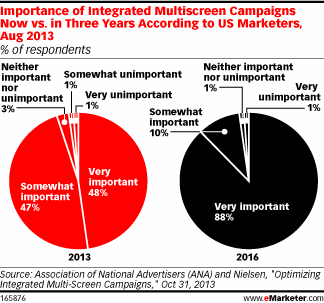Mobile Trends in 2014 (So Far)

Emerging Markets
With the continuous advancements in technology, the world is becoming more connected now than ever before. As projected by Business Insider, almost half of the world’s population (48%) will have Internet access by 2017. Some of this can be accredited to Internet.org, who is “a global partnership dedicated to making affordable internet access available to the two thirds of the world not yet connected.” These efforts will in turn create a new market of consumers who will be eager to access the global web. More specifically, it will bring new consumers with new needs to the mobile industry. Apple, a dominant competitor in the mobile industry, introduced the less expensive iPhone 5C option in hopes of reaching these emerging markets. Another company who is taking advantage of this opportunity is Mozilla with their $25 smartphone running on their own operating system. With this new pool of mobile consumers, innovations and opportunities in this industry are sure to continue to grow.
Responsive Design

Another projection by Business Insider is that every Internet user will have 5 devices/ connections by the year 2017. With this increase in web-enabled consumer devices, multiscreen targeting is essential. A polling by the Association of National Advertisers and Nielsen asked marketers to rate the importance of multiscreen advertising now and in the future. For 2013, 48% said it was very important and 47% answered somewhat important. But by 2016, a total of 98% rated multiscreen targeting as very important or somewhat important. Additionally, U.S. digital ad spending for mobile grew 83% this year while desktop ads declined at -2.4%.
We recently collected data through our 2014 Mobile Readiness Survey, which we created specifically for associations. Out of the 80 responses, 25% plan to incorporate this design to their website and 49% already have a responsive website. We also asked respondents their association membership size. 65% of associations with a membership size of 500 or fewer have responsive websites while 44% do within the category of 501-2,000 members. Although a majority of these smaller sized associations have a responsive site, only 37% of those with over 20,000 members do.
We suggest you consider these mobile trends and how they may impact your association’s mobile strategies.
